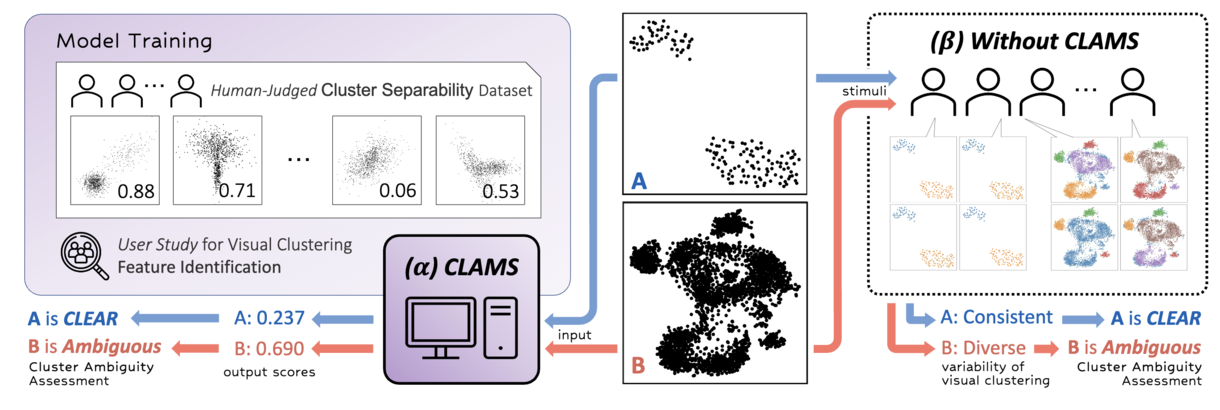Honorable Mention
CLAMS: Cluster Ambiguity Measure for Estimating Perceptual Variability in Visual Clustering
Hyeon Jeon, Ghulam Jilani Quadri, Hyunwook Lee, Paul Rosen, Danielle Albers Szafir, Jinwook Seo
DOI: 10.1109/TVCG.2023.3327201
Room: 104
2023-10-25T22:36:00ZGMT-0600Change your timezone on the schedule page
2023-10-25T22:36:00Z

Fast forward
Full Video
Keywords
Cluster, scatterplot, perception, cluster analysis, cluster ambiguity, visual quality measure
Abstract
Visual clustering is a common perceptual task in scatterplots that supports diverse analytics tasks (e.g., cluster identification). However, even with the same scatterplot, the ways of perceiving clusters (i.e., conducting visual clustering) can differ due to the differences among individuals and ambiguous cluster boundaries. Although such perceptual variability casts doubt on the reliability of data analysis based on visual clustering, we lack a systematic way to efficiently assess this variability. In this research, we study perceptual variability in conducting visual clustering, which we call Cluster Ambiguity. To this end, we introduce CLAMS, a data-driven visual quality measure for automatically predicting cluster ambiguity in monochrome scatterplots. We first conduct a qualitative study to identify key factors that affect the visual separation of clusters (e.g., proximity or size difference between clusters). Based on study findings, we deploy a regression module that estimates the human-judged separability of two clusters. Then, CLAMS predicts cluster ambiguity by analyzing the aggregated results of all pairwise separability between clusters that are generated by the module. CLAMS outperforms widely-used clustering techniques in predicting ground truth cluster ambiguity. Meanwhile, CLAMS exhibits performance on par with human annotators. We conclude our work by presenting two applications for optimizing and benchmarking data mining techniques using CLAMS. The interactive demo of CLAMS is available at clusterambiguity.dev.